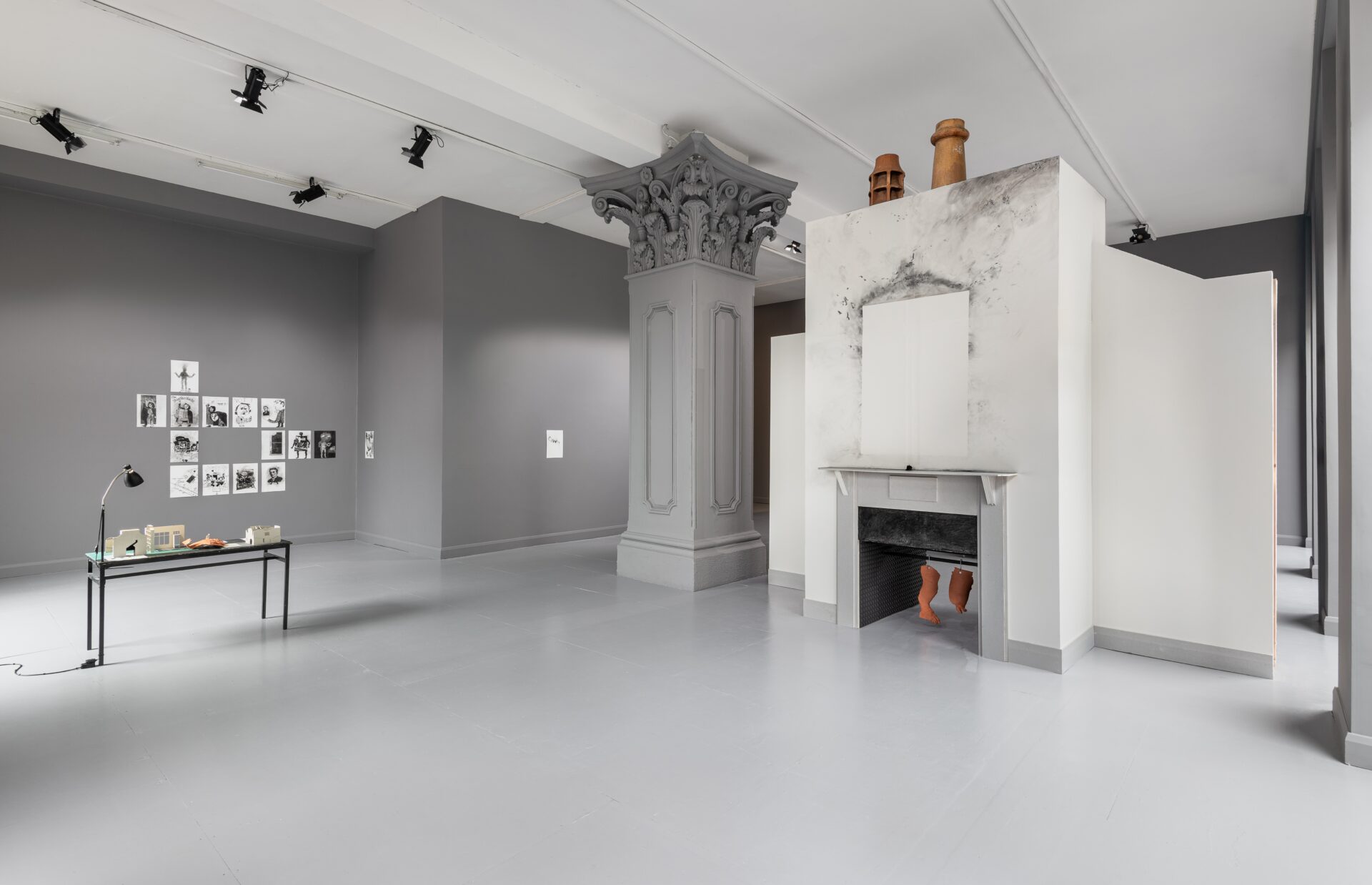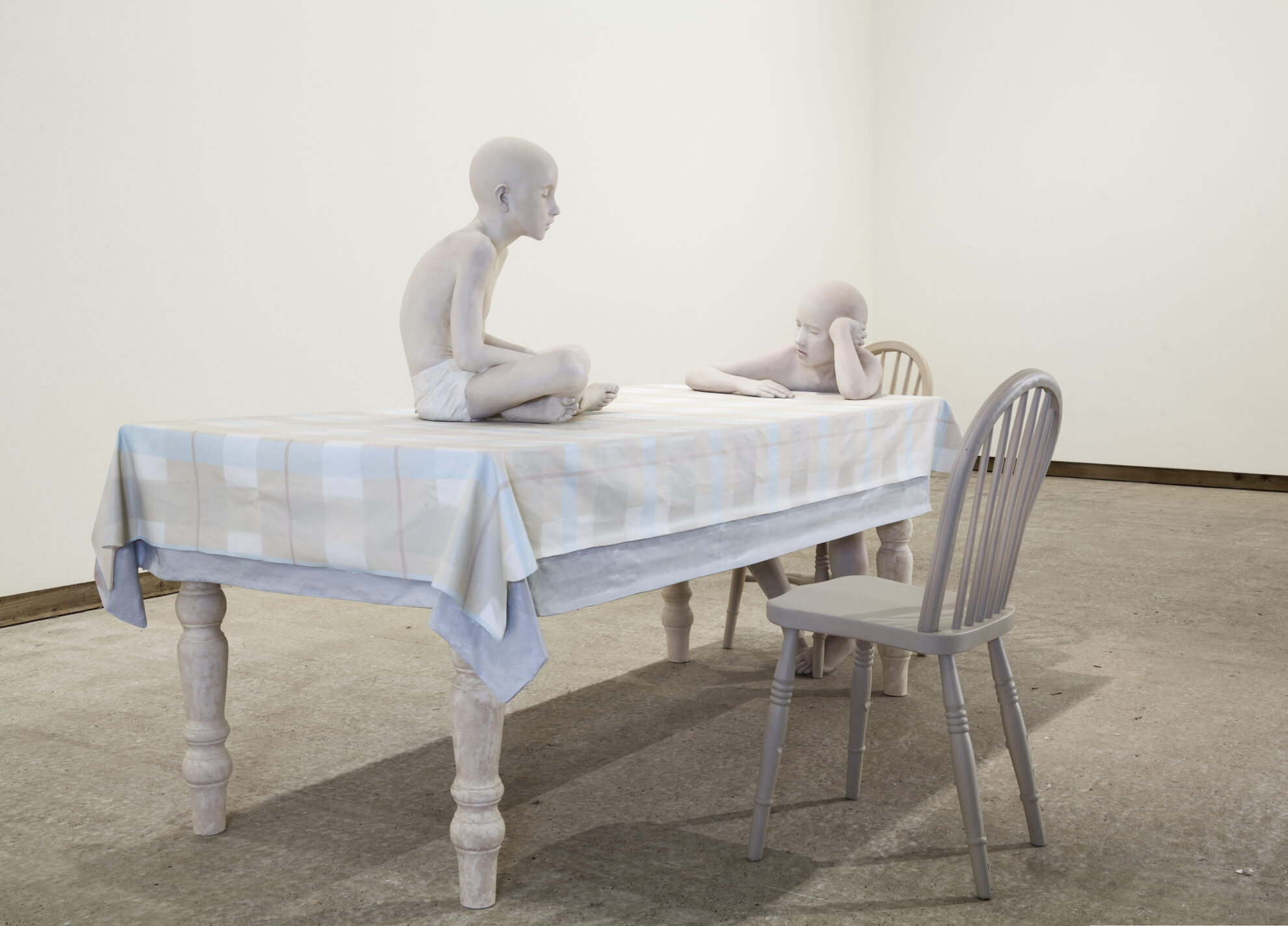Ormston House
21 February – 26 April 2025
In Samuel Beckett’s dramatic monologue, Not I (1972), the central character, Mouth, stretches the limits of language, being, and experience. In all her fragility and fragmentation, Mouth seemingly does not make much sense. Yet within her staccato speech, things are revealed, even if they are not communicated; we bear witness to a wide variety of breakdowns across body, identity, and language. There is no resolution in Not I – just an expectation that the voice will keep looping, even after the curtain comes down.
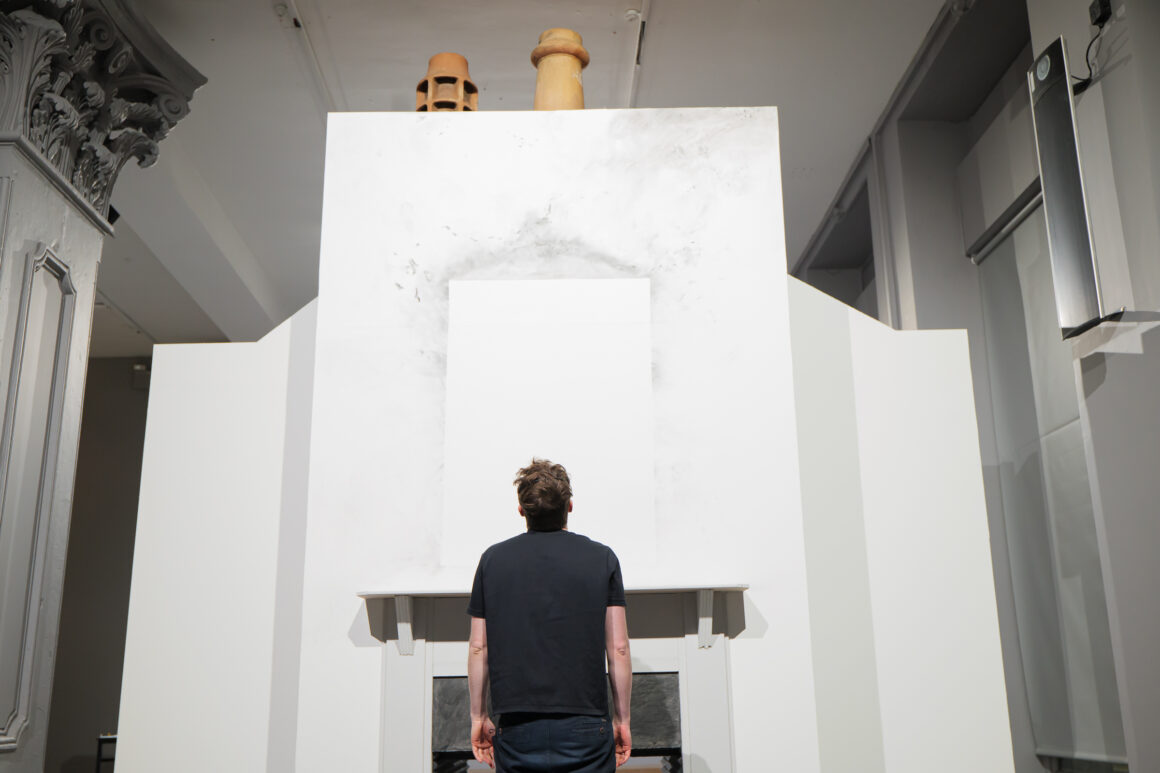
Arguably, Daniel Tuomey’s recent solo exhibition at Ormston House, ‘Stuck, a decomposition’, takes influence from Beckett’s play, not only in the inclusion of the words “Not I” within the artist’s charcoal drawings, but also in its entropic essence. That is, Tuomey’s show is largely an inquiry into disintegration: of speech, space, and senses of self. Using interdisciplinary mediums and methodologies – from architectural drawings to an invocation of balladry – Tuomey’s work deconstructs and reconstructs space and voice, breaking them down again and again.
‘Stuck, a decomposition’ follows the disembodied monologue of a narrator, trapped in the chimney of a Georgian townhouse, trying to make sense of the claustrophobic feeling of perpetuity. The narrator poses rhetorical questions to the audience: Where do we come from? Where might we begin and end? Where might we be going, if the paths keep changing towards an ever more precarious future?
Tuomey’s work, in part, reflects what Franco ‘Bifo’ Berardi refers to as the “slow cancellation of the future,” whereby time has been constricted and impacted by capitalism, so much so that imagining a future is now impossible. Instead, we find ourselves stuck, struggling to find meaning or hope that things will improve. Our narrator reminds us that “this is a crisis, by the way”, and while drawn to understanding its root cause, is also interested in the nuanced transformation of Georgian spaces, and the power structures that have historically controlled language usage in Ireland.
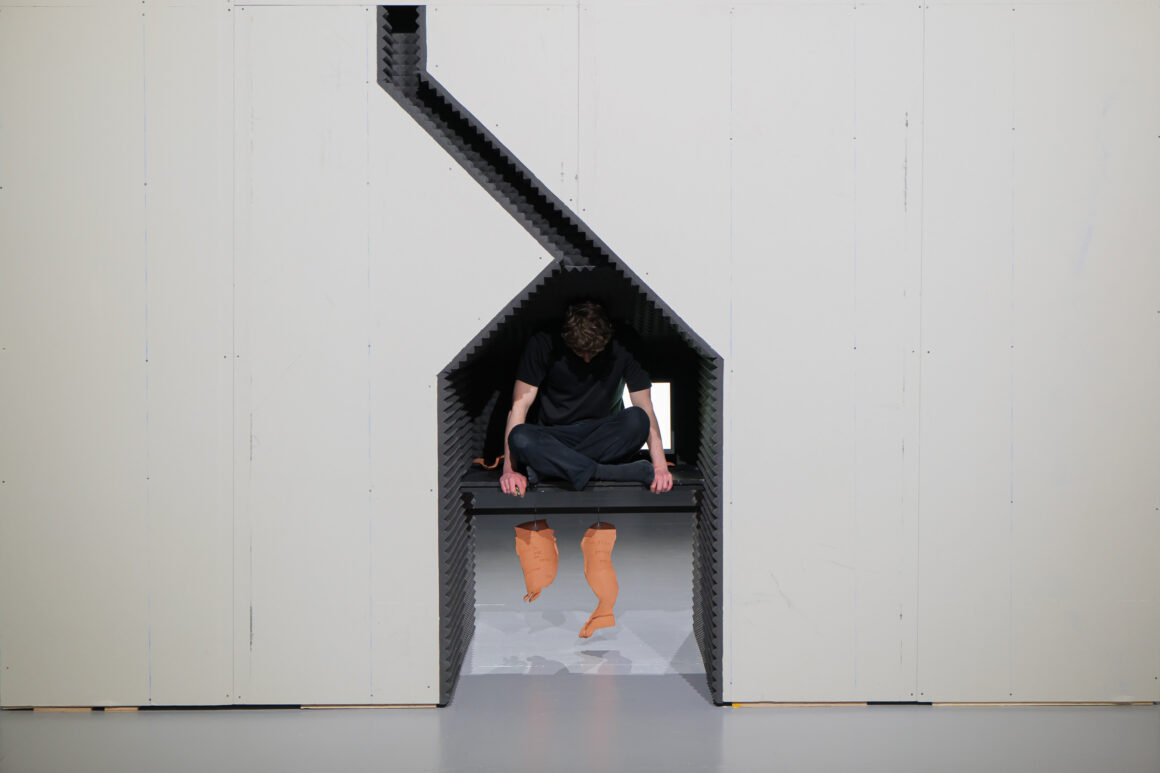
Though Tuomey’s familial connections to Limerick permeate the show, the Treaty City also typifies the ‘austerity conservation’ of Georgian buildings, in which developers, landlords, and local authorities deploy glorified narratives of ‘heritage’ to stimulate external capital investment, with few material, social, or cultural benefits for the local community. One thing is said that means another; the tenses shift, history is transmogrified.
This is further highlighted through the artist’s use of randomised voice and visual patterns. A series of wall-mounted drawings, titled Pucaí (2024-25), speaks to the shapeshifting quality of the eponymous Irish mythological figure. Tuomey’s audio-visual work, An explanation (2025), attempts to detail a genealogy of voice and culture, but also undoes itself through its self-editing software, constantly reordering the narratives that question its own authenticity and ownership. The episodes emanate from the chimney sculpture, Stack (2024-25), merging the body with the architecture, leaving only a voice that is both distinctly Irish and not Irish. This voice does not seem to know its own origins, and struggles to speak.
Tuomey appears to follow Frederic Jameson’s call to ‘always historicise’ by unsettling the presumed ‘naturalness’ of decomposition, and instead considers how ‘decay’ – cultural, economic, spatial, linguistic, and so on – is controlled and orchestrated. Tuomey references this in a multitude of ways, from creating Stack in the exact measurements of his body, to his choreographed movements on opening night, which included conducting the audience to move in unison around the gallery space.
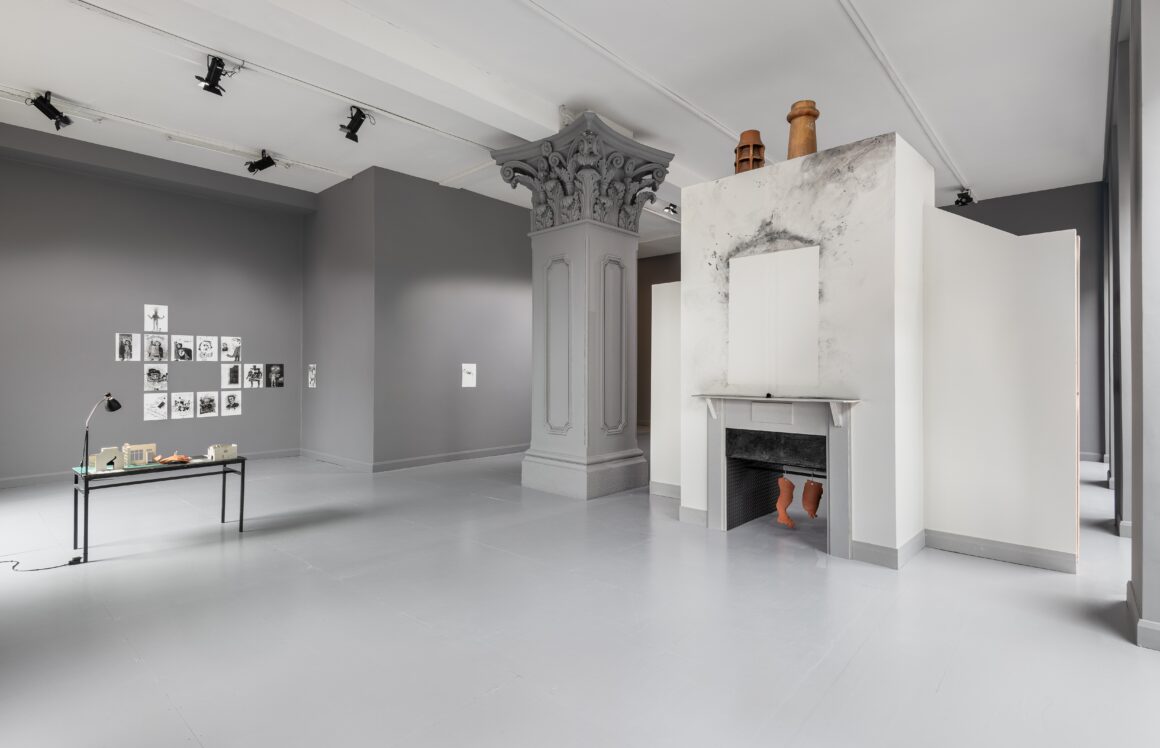
Overall, Tuomey’s exhibition deals conceptually with haunting, and what remains when everything is taken away. It plays upon Irish cultural memory and our enduring anxieties around property, as well as notions of authentic personhood. The work seems to respond to the notion that Romantic Ireland – envisioned in her gendered representations – is dead but not gone. Instead, she might visit us in our shrinking spaces – box rooms, converted basements, chimneys – in all her different forms, sometimes speaking in our shared tongues, and sometimes rendered mute.
Dr El Reid-Buckley is a researcher, writer and creative facilitator from Limerick City.

